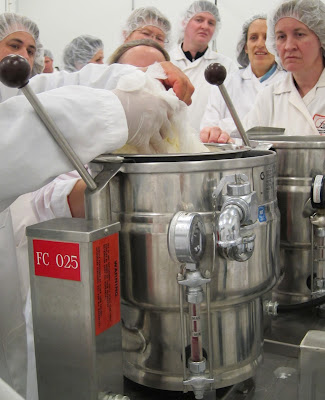Three Farmers Camelina Oil
Bringing a little bit of Saskatchewan to the rest of the country
Three farmers and a scientist
Colin, Dan and Ron are second and third-generation farmers near Midale in southeast Saskatchewan. They are innovative, entrepreneurial farmers who view farming as a way of life, not simply a job, so they are always looking for new approaches.
They heard mention of camelina seed, an ancient oil seed that used to be grown extensively in Europe. Camelina oil faded from view as it was replaced by other culinary oils, and its high levels of unsaturated fat worked against it as it could not be made into margarine.
In recent years, camelina sativa has been reintroduced as a biofuel because it is cheap and easy to grow. It’s drought resistant and cold tolerant. It can be planted in the spring or in the fall, and it has a short growing season so it will be ready to harvest in September even if we have a late spring. It doesn’t require pesticides or herbicides.
Culinary oil
Colin approached Ken Greer, a friend of his who is also a crop scientist, and asked him to take a closer look at camelina as a culinary oil rather than simply a biofuel. Ken and Colin analyzed the oil and discovered that it was rich in omega-3 and omega-6 fatty acids and vitamin E. In addition, it was very stable and had a much longer shelf life than other cold-pressed, high omega-3 oils.
Unfortunately, camelina had never been consumed as a food in Canada, so Three Farmers had to put together a novel foods application for Health Canada. Despite what people had said, the application process was time consuming but not all that difficult. Colin’s wife, who is also a scientist, compiled the research and the historical information, and the oil received food status in January 2010.
Enriching the Saskatchewan economy
All too frequently, Saskatchewan farmers export their harvests to another jurisdiction to be processed. Three Farmers wanted to add value to the provincial economy by processing the seed and exporting it as a finished product.
They looked at various uses that would highlight the oil’s characteristics – nutraceuticals, skin care, food – and decided to export it as a culinary oil.
The next step was to identify their target audience. They decided to sell their product through farmers’ markets and independent specialty stores because this would be the best way to reach people who enjoy good food, who care about where their food comes from, and who are trying to reduce their environmental footprint.
Where does this oil come from?
More and more consumers want to know where their food came from and who produced it. Three Farmers is trying to strengthen the link between farmers and consumers by making it easy for us to find out where our oil comes from. Each bottle of oil has a product code. Enter that code on the company’s website, and you’ll learn the name of the farmer who grew the camelina, their GPS location and the growing conditions when that batch of seed was grown.
The company is adding a QR barcode to the bottles which consumers can scan with their smart phones to immediately obtain the background information on their purchase.
This is new technology, and the company is proceeding by trial and error as they work out how to apply the QR code on a curved surface and how to ensure that the image is large enough to be easily read by BlackBerrys as well as iPhones.
Marketing a brand-new product
The company decided to market the oil themselves via trade shows and individual sales rather than relying on a distributor.
Three Farmers has a limited budget, so they are starting in Ontario as they attended a trade show there last December and have already had some favourable press coverage. Plus, Natasha has family in Ontario so she can reduce her expenses by staying with them.
And then Natasha will start going from door to door. “The great thing about specialty stores is that you can walk in and actually talk to someone. You couldn’t do that with the big supermarket chains,” she says.
Three Farmers has also identified a courier company that can be relied on to make small deliveries to a number of different stores. Another company will organize tastings, just like the ones in liquor stores.
Future plans
Three Farmers is looking forward to strengthening their company. They have obtained their own oil press, so they’ll be pressing their own oil in the future. They are also working with the Food Centre on campus to extend their line. By late spring 2011, we should be able to enjoy Three Farmers basil pesto and roasted red pepper lentil dip, and they’re also working on a camelina hummus.
I asked Natasha if they were able to find a use for the meal which is left over after they have extracted the oil. She said that they would have liked to be able to sell it as animal food, but the approval process was far too expensive and complicated as it would involve testing and feeding trials. They are currently donating the meal to universities for research studies.
Purchase Three Farmers oil:
Saskatoon – Bulk Cheese Foods, Souleio, Saskatoon Farmers’ Market, Cava Cuisine
Regina – Italian Star Deli
Estevan – Nutter’s Bulk and Natural Foods
Online








Comments